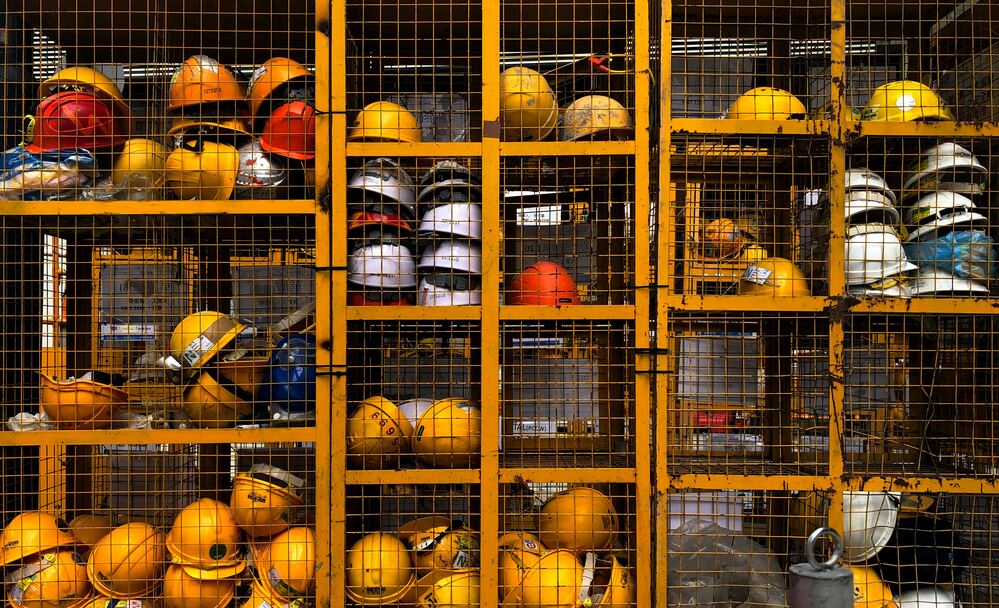Safety is discussed frequently in the world of industrial construction because it’s a concern that’s top of mind. Due to the nature of construction work with heavy machinery, power tools, pressurized equipment, high and low temperatures, hazardous chemicals, and heavy, unsecured building materials, it’s an industry with one of the highest rates of workplace injury and death. Industrial construction companies owe it to their workers, as well as their clients and shareholders, to take safety seriously.
Top 4 Safety Guidelines for Industrial Construction Companies
Here are four safety guidelines that industrial construction companies should absolutely follow to ensure a safe, healthy, and productive work environment.
1. Know the Law
This is less a guideline and more an absolute mandate: you must know the laws that apply to the work your company does. Workplace safety is regulated by the Occupational Safety and Health Administration (OSHA); the construction industry is regulated by OSHA Standard 1926. All aspects of the industry are regulated under this act — from more general rules on housekeeping and injury reporting to industry-specific rules on concrete construction and steel erection.
Keeping up to date on new regulatory requirements is crucial, and it’s not only the responsibility of an EHS Manager but all of company leadership.
2. Foster a Safety Culture
“Safety culture” is a bit of a buzzword in the industry, but it’s not initially a clear-cut concept. Every workplace has a culture, comprised of the ways in which people do their work and interact with one another and the values that guide those actions. Culture can seem to just arise out of day-to-day work and the way things get done (or don’t), but it’s important to make safety one of the values that guide the actions of your entire team.
In a safety culture, neither management nor employees consider taking risky shortcuts or violating inconvenient regulations, because that’s just not how they do business. No one resists or even just absently forgets to wear the necessary PPE. Why? Because the importance of performing work safely is emphasized not just in infrequent training sessions but every day on the job site, and not just by top leadership but by crew members at every level.
3. Get Everyone Involved
As mentioned previously, having buy-in from everyone in your organization — from the newest hire to the CEO — is essential to promoting a safety culture. In addition to comprehensive safety training and top-down commitment to safety, getting other team members involved is necessary not only to encourage safe work habits but to accurately evaluate and mitigate hazards and risks.
Even the best managers and supervisors can only see and do so much. Workers who are working with hazards on a daily basis will have valuable insights on how to address those hazards and any obstacles they face in safely performing their duties.
4. Evaluate and Improve
Beyond the reporting obligations determined by OSHA, it’s crucial that industrial construction companies keep detailed records of their safety program’s performance. This includes not just injuries and incidents, but near misses and potential hazards that are caught before they could result in an incident and when changes to protocols are implemented. Tracking this information will allow you to review it and make necessary changes, including seeing patterns that might not otherwise be obvious.
Health and safety systems are never perfected, and there will be incidents and mistakes, so continuous improvement is possible. This is especially the case as regulations will evolve over time, and your company will need to implement and adapt to the new requirements.
Our Commitment to Safety at PALA Interstate
PALA Interstate ensures a safe project all around by adhering to the regulations and guidelines listed above alongside our own safety protocols. In the planning phase of our projects, we perform both a Job Safety Analysis (JSA) and Pre-task Safety Analysis (PTSA).
We’re also dedicated to fostering a safety culture, involving management and site staff. We perform industry, site, and PALA-specific safety training and orientation. Regular observations are performed on the worksite to ensure that safe work practices are being used, and we use the PII™ system for incident measurement, analysis, and feedback — because if you don’t measure it, you can’t improve on it.
Safety is at the heart of every project we take on; safety for people, facilities, and environments. For industrial construction and aboveground storage tank fabrication, installation, and repair, you can trust us to perform high-quality work with a safety mindset. Get in touch to learn more about how our work practices promote a safer worksite and results that will exceed your expectations.

